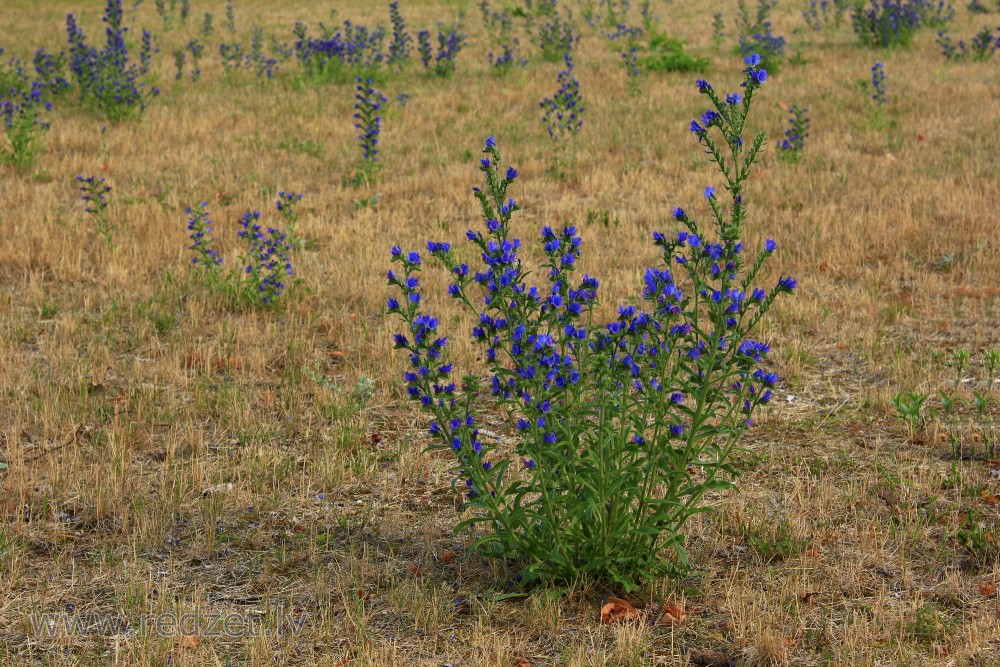Echium vulgare (viper's bugloss)
Echium vulgare — known as viper's bugloss and blueweed — is a species of flowering plant in the borage family Boraginaceae. It is native to most of Europe, and western and central Asia and it occurs as an introduced species in north-eastern North America.
Kingdom: Plantae
Clade: Angiosperms
Clade: Eudicots
Clade: Asterids
Order: Boraginales
Family: Boraginaceae
Genus: Echium
Species: E. vulgare
Description
It is a biennial or monocarpic perennial plant growing to 30–80 cm (12–31 in) tall, with rough, hairy, oblanceolate leaves. The flowers start pink and turn vivid blue and are 15–20 mm (0.59–0.79 in) in a branched spike, with all the stamens protruding. The pollen is blue but the filaments of the stamens remain red, contrasting against the blue flowers. It flowers between May and September.
Distribution
It is native to Europe and temperate Asia. It has been introduced to North America and is naturalised in parts of the continent including northern Michigan, being listed as an invasive species in Washington state. It is found in dry calcareous grassland and heaths, bare and waste places, along railways and roadsides, and on coastal cliffs, sand dunes and shingle.
Human Control
Where the Viper's bugloss is an invasive species humans are trying to regulate them by weeding them.
Cultivation
Echium vulgare is cultivated as an ornamental plant, and numerous cultivars have been developed. The cultivar ‘Blue Bedder’ has gained the Royal Horticultural Society’s Award of Garden Merit.
en.wikipedia.org

